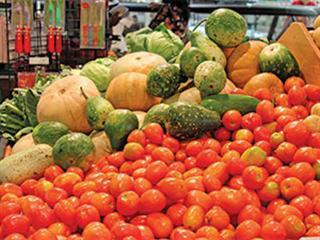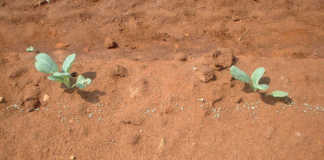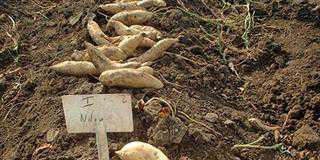
Fortunately, for various reasons, seed has virtually been eliminated as a source of infection nowadays. There are three bacterial diseases which you need to be aware of: canker, spot and speck. Bacterial canker (Corynebacterium michiganense) used to be a much bigger problem in the past due to seed contamination. The bacteria can survive for short periods in the soil and on equipment. It will also remain on plant debris until decomposed.
Clean seed and crop rotation have seen bacterial canker brought under control. But if it does occur, it can be very destructive. It is most active at 25°C, and spreads rapidly by means of driving rain and crop handling. High-pressure sprayers can also spread the disease to adjoining rows if droplets reach there. Once in a crop, C. michiganese is virtually impossible to contain.
Diagnosis
Symptoms vary, making initial diagnosis difficult. There may be some wilting and dying of leaves, and you may even find that only one side of the plant is affected. Cut infected stems and you will see a yellowish-brown discolouration in the conducting tissue. Fruit symptoms are easier to identify. You will see light-coloured spots with a brown centre, which look like a bird’s eye.
Bacterial Speck
Bacterial speck (Pseudomonas syringae) is much more serious and difficult to contain in favourable conditions. First, you have to make sure the seedlings are healthy. As with canker, the seed is now usually disease-free, but the plants can be contaminated in a seedling environment if hygiene isn’t up to scratch. Cool, moist conditions and prolonged periods of free water on the plant will favour the disease’s spread, with 21°C optimum for development.
The signs are similar to those of bacterial spot, especially on the foliage. Look for small spots consisting of black lesions usually surrounded by a light halo.
Bacterial spot
In the case of bacterial spot (Xanthomonas campesiris) these usually have a greasy appearance. The spots are about 2mm in diameter and tend to be concentrated closer to the leaf margins. Symptoms on the fruit are easier to distinguish, with the speck spots being slightly raised and smaller. Spots on the stems are more elongated. They’re also more superficial compared to the larger ones produced by bacterial spot, which can become scaly. Avoid any work on the crop when the leaves are moist and especially when any symptoms are present. I was once pollinating in tunnels during a spell of cool, rainy weather and every flower I worked on became diseased.
Especially vigilant
Bacterial speck symptoms will develop three to 10 days after infection if conditions are favourable. You’ll then need to be especially vigilant in inspecting young transplants. If you spot any symptoms, immediately start a vigorous spray programme incorporating copper. This won’t kill off the infected areas, but it will reduce the rate of spread. It’s very important to achieve control at a young stage. This will make life easier for you. Small plants require much less spray and so you can afford to be more thorough at this stage. Ensure that all surfaces are well wetted.
Some weeds are able to host this disease, which is another incentive to ensure the verges of your lands are free of broad-leafed weeds. This practice is also useful in reducing viruses. Finally, it goes without saying that good crop rotation is also a step in the right direction. Bacterial spot is also a disease of peppers. As with speck, it’s difficult to control once it gets a foothold – and, as with canker, it can be spread with high-pressure spraying. Treatment is the same as for P. syringae. There are resistant genes for these diseases, but they don’t provide immunity.
Contact Bill Kerr at [email protected]. Please state ‘Vegetable production’ in the subject line of your email.












